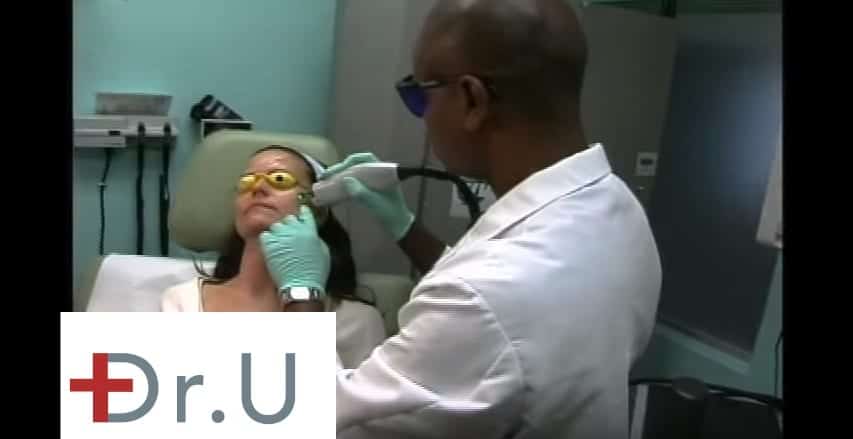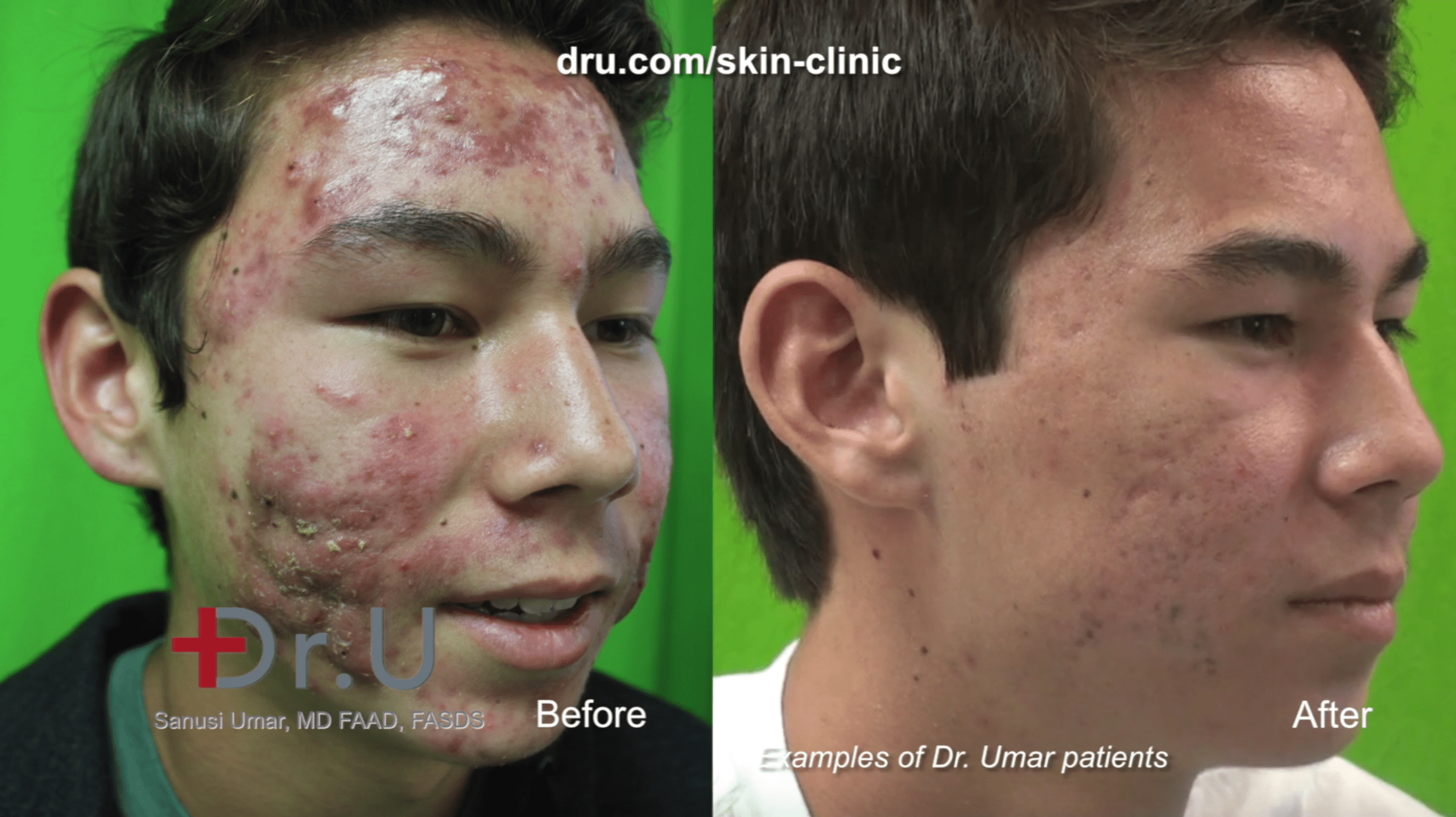Severe acne laser treatment is most often used for patients who suffer from severe nodulocystic acne. This skin condition forms large cystic lesions beneath the skin that are often painful, and averse to most medical treatments due to their genetic and/or hormonal origin. Topical and oral antibiotics typically do not work for acne this severe. is the standard treatment for this degree of acne, but there are many reasons a patient may opt not to pursue this medication for acne treatment. So what is a safe and effective solution for patients who suffer from nodulocystic acne?
Watch the video below to learn about PDT laser therapy for severe acne laser treatment.
Why is PDT laser therapy safer than Accutane?
PDT laser treatment for acne is a safe alternative to Accutane since Accutane is known and scrutinized for the severe side effects it can cause. Women cannot get pregnant while on the drug because it can cause birth defects, and it can its potentially toxic effects on the body can lead to serious illnesses, such as Ulcerative colitis, Crohn’s disease, and IBD. Psychiatric disorders such as depression and increased risk of suicide can also result from Accutane. With this litany of possible outcomes, many people are safer choosing photodynamic laser therapy for acne.

How does severe acne laser treatment with PDT work?
For patients who have a poor response to Accutane or who choose not to use Accutane due to its toxicity, the top option is photodynamic laser therapy for acne or PDT laser therapy. Pdt laser treatment for acne is the use of lasers (especially Vbeam) in conjunction with Levulan, which is a photosensitizer. This combination releases chemicals that diminish acne-causing bacteria, thereby reducing pimples, lesions, inflammation, and redness. Photodynamic therapy acne reviews tend to be extremely positive for alleviating breakouts, however, patients must stay out of direct sunlight post-treatment to avoid burning and possible scarring.

Pursuing PDT laser treatment for acne after Accutane
Even if you have previously been on Accutane, you can consult your dermatologist about pursuing PDT laser treatment for acne. Patients who have been on Accutane previously, and also patients who’ve never tried Accutane for their acne, can see great improvement. While Accutane is one of the leading prescriptions for nodulocystic acne, it does not always alleviate this skin condition, and some patients need two courses of treatment (which lasts approximately five months). The teen in the photos below chose not to use the medication for his severe acne, and instead consulted Dr. U about laser therapy alternatives.
If you’re a patient whose acne was not cured by Accutane and prefer not to pursue a second round of treatment on this potentially toxic drug, PDT laser therapy can be a safer alternative.

If you suffer from severe acne of any kind and are looking for permanent relief, get in touch with Dr. U directly through our Ask Dr. U form. You can access it by clicking the button below:



